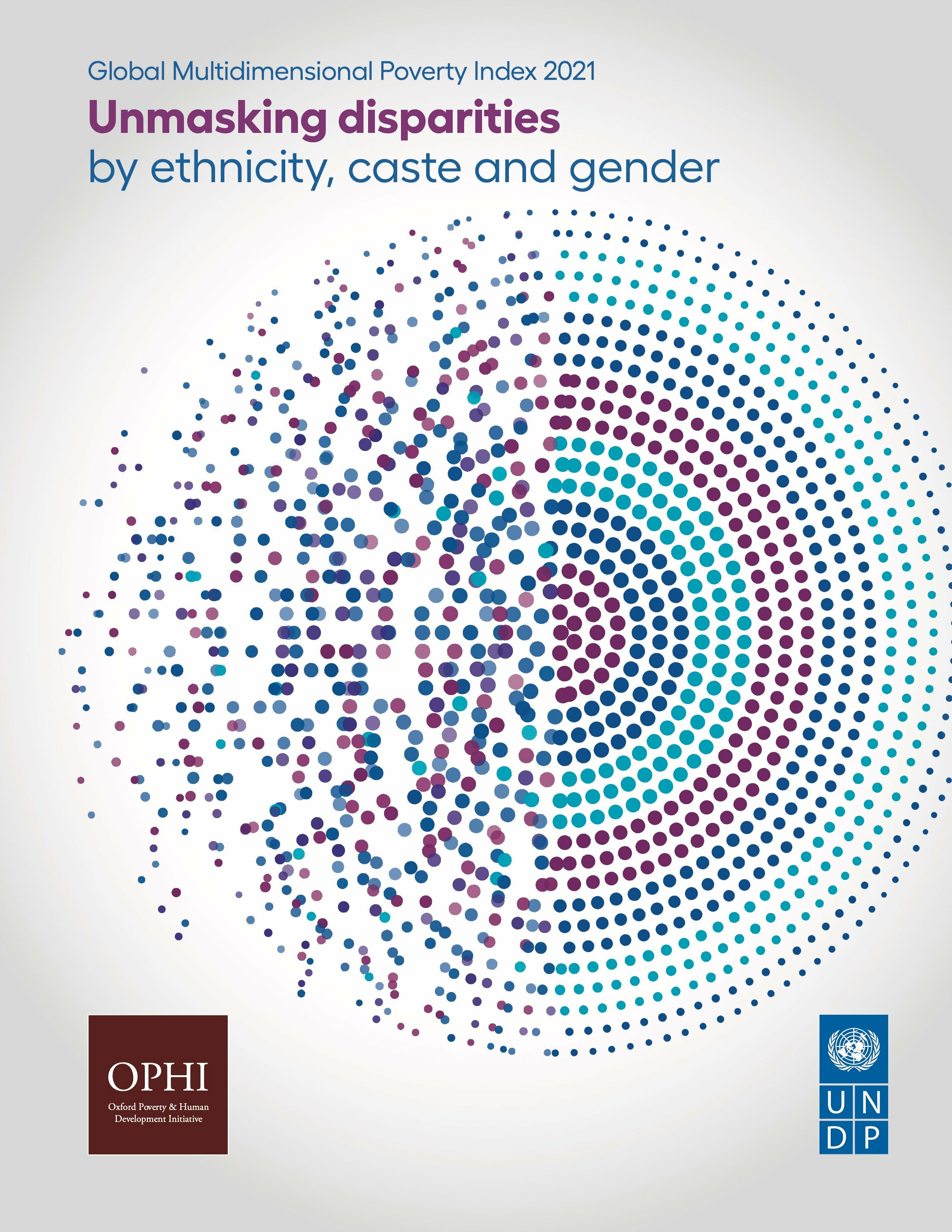Global Multidimensional Poverty Index 2021: Unmasking disparities by ethnicity, caste, and gender
by United Nations Development Programe (UNDP) and Oxford Poverty and Human Development Initiative (OPHI)
Disparities in multidimensional poverty among ethnic groups are consistently high across many countries and in nine ethnic groups more than 90 percent of the population is trapped in poverty, according to new analysis on global multidimensional poverty released today.
The global Multidimensional Poverty Index (MPI) produced by the United Nations Development Programme (UNDP) and the Oxford Poverty and Human Development Initiative measures poverty by considering various deprivations experienced by people in their daily lives, including poor health, insufficient education and a low standard of living. Today’s report examines the level and composition of multidimensional poverty across 109 countries covering 5.9 billion people and presents an ethnicity/race/caste disaggregation for 41 countries with available information.
The report finds that, in some cases, disparities in multidimensional poverty across ethnic and racial groups are greater than disparities across geographical subnational regions. Indeed, when the MPI is disaggregated by ethnic group, the range in values is greater than that across all 109 countries and all other disaggregations tested.
It also shows how, within a country, multidimensional poverty among different ethnic groups can vary immensely. For example, the difference in the percentage of people who are multidimensionally poor across ethnic groups is more than 70 percentage points in Gabon and Nigeria.
In Latin America, indigenous peoples are among the poorest. For instance, in Bolivia indigenous communities account for about 44 percent of the population but represent 75 percent of multidimensionally poor people. The figures are also stark in India where five out of six multidimensionally poor people were from lower tribes or castes.
The multidimensional analysis also maps out next steps. The MPI combines the incidence and the intensity of poverty. The two poorest ethnic groups in Gambia - the Wollof and the Sarahule - have roughly the same MPI value, but their deprivations differ, suggesting different policy actions are needed to reduce multidimensional poverty.
An intrahousehold analysis of multidimensional poverty focused on gender is also included. Worldwide about two-thirds of multidimensionally poor people (836 million) live in households where no woman or girl completed at least six years of schooling. One-sixth of all multidimensionally poor people (215 million) live in households in which at least one boy or man has completed six or more years of schooling but no girl or woman has. The report also finds that women and girls living in multidimensional poverty are at higher risk of intimate partner violence.
Key findings
Worldwide, across 109 countries and 5.9 billion people:
- 1.3 billion people are multidimensionally poor.
- About half (644 million) are children under age 18.
- Nearly 85 percent live in Sub-Saharan Africa (556 million) or South Asia (532 million).
- More than 67 percent live in middle-income countries.
But what is the day-to-day reality of life for multidimensionally poor people? The data paint a grim picture:
- 1 billion each are exposed to solid cooking fuels, inadequate sanitation and substandard housing.
- 788 million live in a household with at least one undernourished person.
- 568 million lack improved drinking water within a 30-minute roundtrip walk.
Read and download the full report here: http://hdr.undp.org/en/2021-MPI
